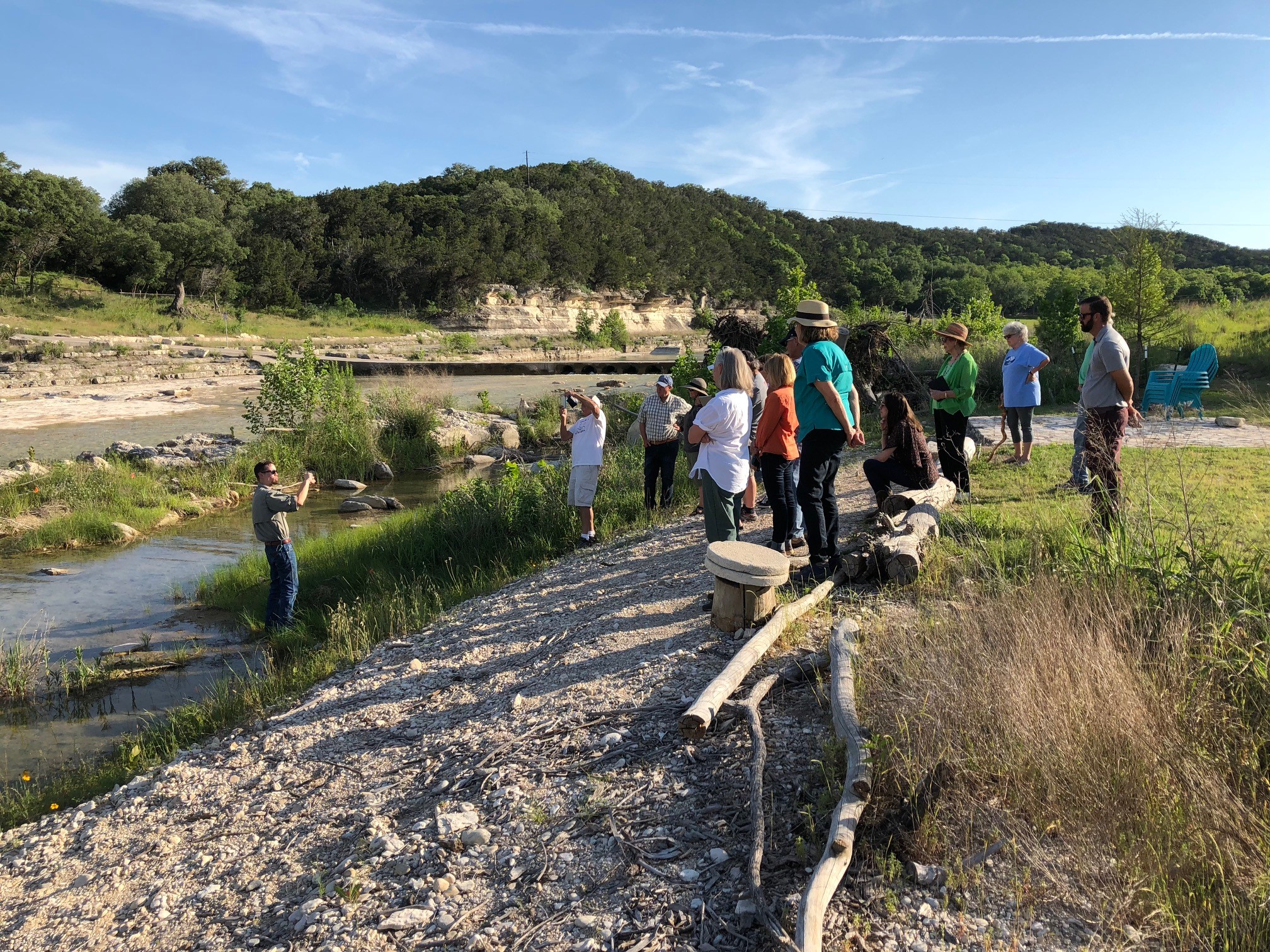
Purpose of the project:
The purpose of this project was to implement landscape-scale conservation through a network of landowners that would willingly take restoration actions to address issues and threats that degrade water quality, reduce water quantity, and degrade riparian habitats that in turn favor exotic species. This network of willing landowners and subsequent habitat to support the repatriation of Guadalupe bass in the upper portion of the Blanco River. SARP funds were leveraged with state invasive species funds to combat the spread of invasive species that degrade instream and riparian habitats. A historic flood in May 2015 brought intense public interest in riparian restoration.
Human Interest/Community Benefit:
The Blanco River is one of the primary river networks in the Edwards Plateau that residents in Austin, San Marcos, San Antonio, and surrounding communities depend upon for drinking water, flood abatement, agricultural production as well as recreation (e.g. fly fishing, paddling, and birding. The number of Texans that participate in paddle sports has increased 300% over 10 years. According to TPWD, the economic impact of stream fishing in the Edward’s Plateau if valued at over $74M. This project will expand fishing opportunities for the State Fish of Texas to a river that is geographically located in the center of Austin-San Antonio corridor.
Purpose of the project:
The purpose of this project was to implement landscape-scale conservation through a network of landowners that would willingly take restoration actions to address issues and threats that degrade water quality, reduce water quantity, and degrade riparian habitats that in turn favor exotic species. This network of willing landowners and subsequent habitat to support the repatriation of Guadalupe bass in the upper portion of the Blanco River. SARP funds were leveraged with state invasive species funds to combat the spread of invasive species that degrade instream and riparian habitats. A historic flood in May 2015 brought intense public interest in riparian restoration.
Human Interest/Community Benefit:
The Blanco River is one of the primary river networks in the Edwards Plateau that residents in Austin, San Marcos, San Antonio, and surrounding communities depend upon for drinking water, flood abatement, agricultural production as well as recreation (e.g. fly fishing, paddling, and birding. The number of Texans that participate in paddle sports has increased 300% over 10 years. According to TPWD, the economic impact of stream fishing in the Edward’s Plateau if valued at over $74M. This project will expand fishing opportunities for the State Fish of Texas to a river that is geographically located in the center of Austin-San Antonio corridor.
Project Timeline:
Previous Work (prior to this project work in preparation of a successful repatriation)
• Fall 2011-Spring 2012: Removal of Smallmouth Bass and hybrids from the upper Blanco River
• Spring 2012-Spring 2013: Stocking of genetically pure Guadalupe Bass fingerlings
Current project’s Timeline:
• Summer 2014-Fall 2016: Fish community surveys and black bass genetic assessments in the upper Blanco River
• Fall 2015-Spring 2017: Outreach to landowners to form the network of willing landowners.
• Spring 2016-Fall 2017: Implementation of on-the-ground restoration projects as well as providing technical guidance to landowners through the watershed to inform and encourage best management practices.
Economic Calculator results:
Jobs: 3.9047
Total Sales: $388,998.79
Value Added: $234,941.43
Income: $173,360.32
Partners: TPWD, TNC, Hill Country Alliance, SARP, TPW Foundation, Fredericksburg, TreeFolks, USFWS (via NFHP).
Summary project outputs:
• Purchased 3,300 trees (for distribution by TreeFolks, one of our local partners) to support the restoration of 350 acres of riparian habitats along the Blanco River
• Conducted 7 riparian restoration workshops, attended by approximately 450 Blanco River stakeholders
• Purchased and distributed 15,000 riparian sedges and grasses to stabilize flood-damaged river banks
• Several hundred packets of riparian recovery seed mix were purchased and distributed to “jump-start” restoration
• Onsite technical guidance on riparian restoration best management practices was provided to more than 50 Blanco River streamside landowners
• Collaborated with 67 individual riverside landowners to manage Arundo along 15 miles of Blanco River
• In partnership with the Lady Bird Johnson Wildflower Center, published the Blanco River Restoration Design Guidelines manual
Project Submission by:
The Southeast Aquatic Resources Partnership
